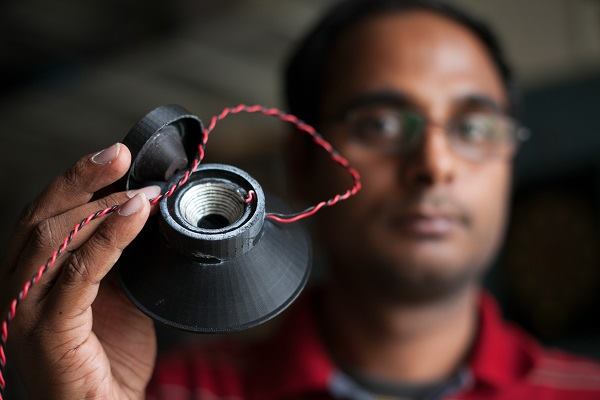Scientists reached another milestone in the evolution of 3D printing by manufacturing a fully functioning loudspeaker. Researchers at Cornell University used an integrated system with multiple materials to print the electronic device.
“We’re trying to move the printing away from just printing passive parts made of plastic or metal, to printing integrated systems, active systems that can do something,” says associate professor of mechanical and aerospace engineering, Hod Lipson. Lipson led the project with graduate students Apoorva Kiran and Robert MacCurdy.
Kiran says that the loudspeaker is a relatively simple object, consisting of plastic for the housing, a conductive coil, and a magnet. Silver ink was used as the conductor and a viscous blend of strontium ferrite was used to create the magnet.
According to Kiran, the challenging part of this project was creating a design using the exact materials that can be assembled together into a functional shape. At this time, most printers cannot handle multiple materials, as they require varying temperatures and curing times, and it is difficult to find mutually-compatible materials.
This breakthrough required two different printers performing two different functions. But Lipson says it is feasible to foresee a single printer that could perform multiple functions with various materials in the not-so-distant future.
The Cornell lab has printed a consumer electronic device before. In 2009, scientists printed a functioning replica of the Vail Register, the antique telegraph created by Samuel Morse and Alfred Vail in 1844. This particular device was chosen because it was an early application of electromagnetism (and because university co-founder Ezra Cornell made his fortune in the telegraph industry).
To test the functionality of the speaker, the students attached the speaker to amplifier wires and played a clip from President Barack Obama’s 2013 State of the Union address—a speech in which Obama says that 3D printing has “the potential to revolutionize the way we make almost everything.”
“We’ve only seen in the tip of the iceberg with this technology,” said Lipson.
